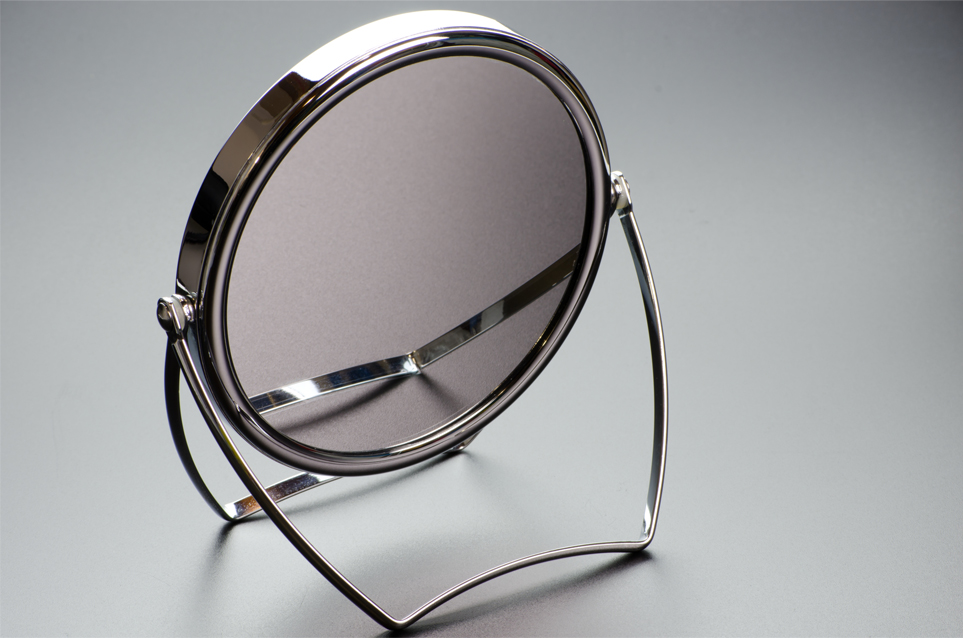Silver Speculum
"However, this mirror will give us neither knowledge nor truth. Men have wasted away before it, entranced by what they have seen, or been driven mad, not knowing if what it shows is real or even possible." ~Albus Dumbledore
Long before people lost themselves in the Mirror of Erised and sometime after Narcissus became fascinated with his own reflection in the water, humans sought to create the perfect reflective surface. Let's take a look back at the history of the looking glass.
 The first mirrors were likely pensive pools of still water. Polished reflective stones, like the volcanic glass obsidian, have been dated back to 6000 BC. In Mesopotamia, brass was polished and used as mirrors around 3500 BC. Following brass, other metals that have been polished into mirrors include copper, bronze, tin, silver, and gold. Alloys, or metal mixtures, were also used. Speculum metal is a white alloy of approximately two-thirds copper and one-third tin. Although highly reflective, speculum metal was difficult to produce. It was used in early telescopes and only the wealthy owned speculum mirrors.
The first mirrors were likely pensive pools of still water. Polished reflective stones, like the volcanic glass obsidian, have been dated back to 6000 BC. In Mesopotamia, brass was polished and used as mirrors around 3500 BC. Following brass, other metals that have been polished into mirrors include copper, bronze, tin, silver, and gold. Alloys, or metal mixtures, were also used. Speculum metal is a white alloy of approximately two-thirds copper and one-third tin. Although highly reflective, speculum metal was difficult to produce. It was used in early telescopes and only the wealthy owned speculum mirrors.
Eventually, the Romans developed a technique to coat blown glass with metal, namely lead or tin. The Chinese had been coating glass with a silver-mercury amalgam since 500 AD. During the Renaissance, a tin-mercury amalgam was used to coat glass to make mirrors. Venice, known for its glass-making, became the center of mirror production.
Mirrors were made through glass blowing. The globe of blown glass was cut in order to flatten it. The glass was coated with the alloy of tin and mercury in a process called silvering, named for its color. No actual silver was involved. Tin was pounded paper thin and covered in mercury. The glass was placed on top and heated to get the metallic coating to stay on the glass. Unfortunately, mirror makers tended to die early from mercury poisoning.
The silver-glassed mirror is accredited to the German chemist, Justus von Liebig. In 1835, he began his initial experiments to deposit a layer of silver onto glass. He utilized the chemical reaction between glucose and silver nitrate, allowing for the mass production of affordable mirrors. Modern mirrors typically have a coating of silver or aluminum.
As you might know, vampires don't show up in mirrors. Vampires are also allergic to silver, so if you are concerned about a vampire sneaking up on you while you are admiring your own stunning reflection, you should make sure all your mirrors contain silver!






